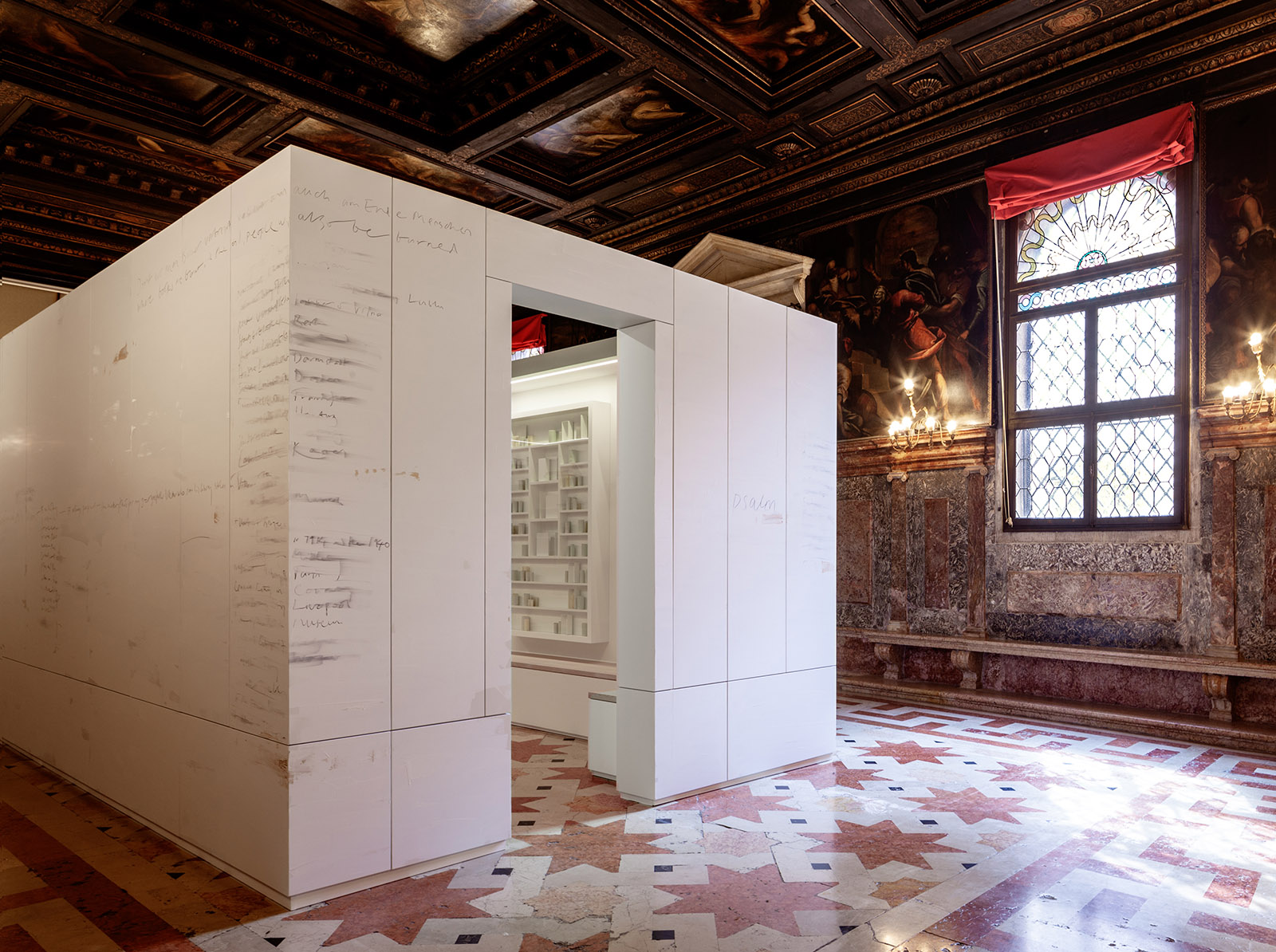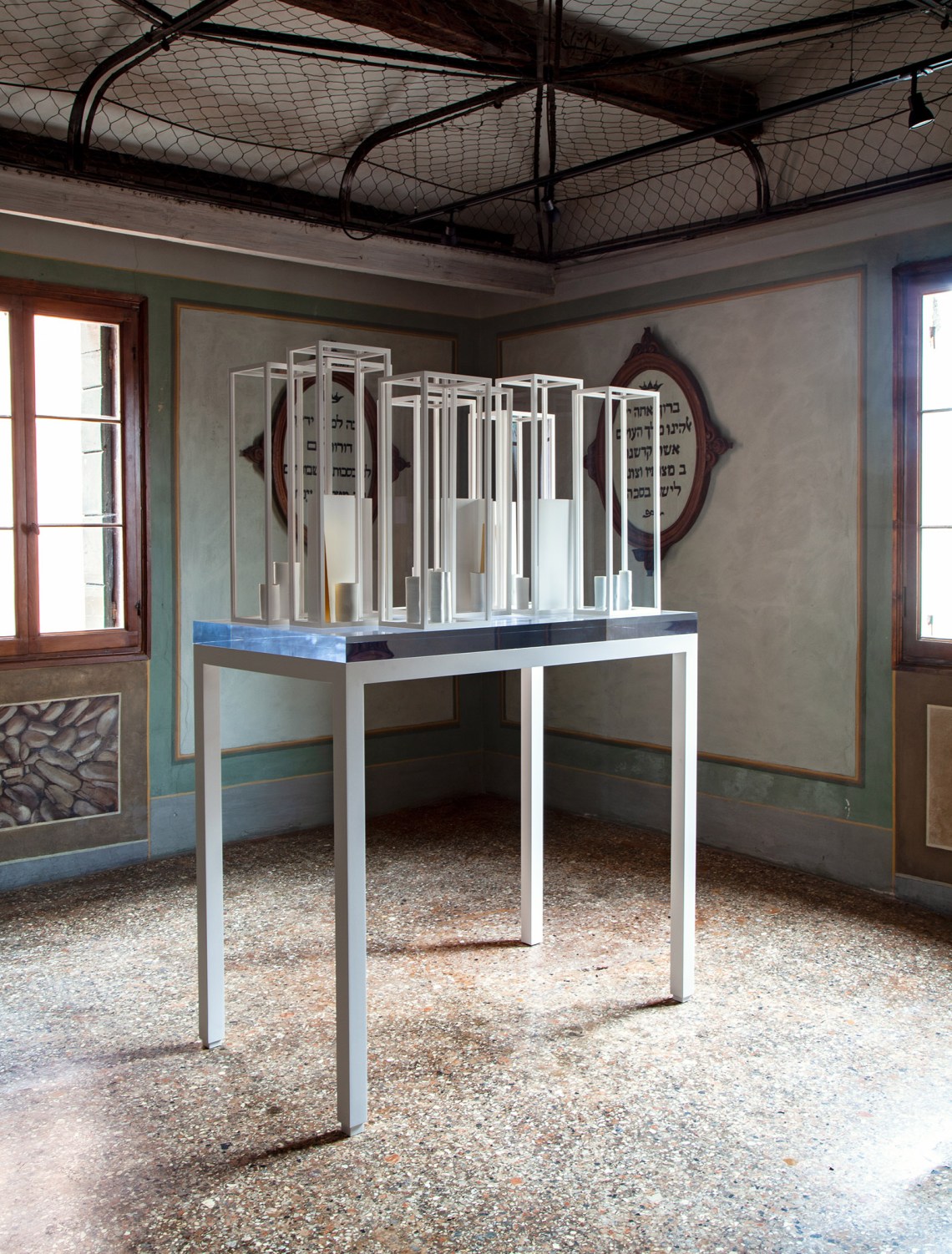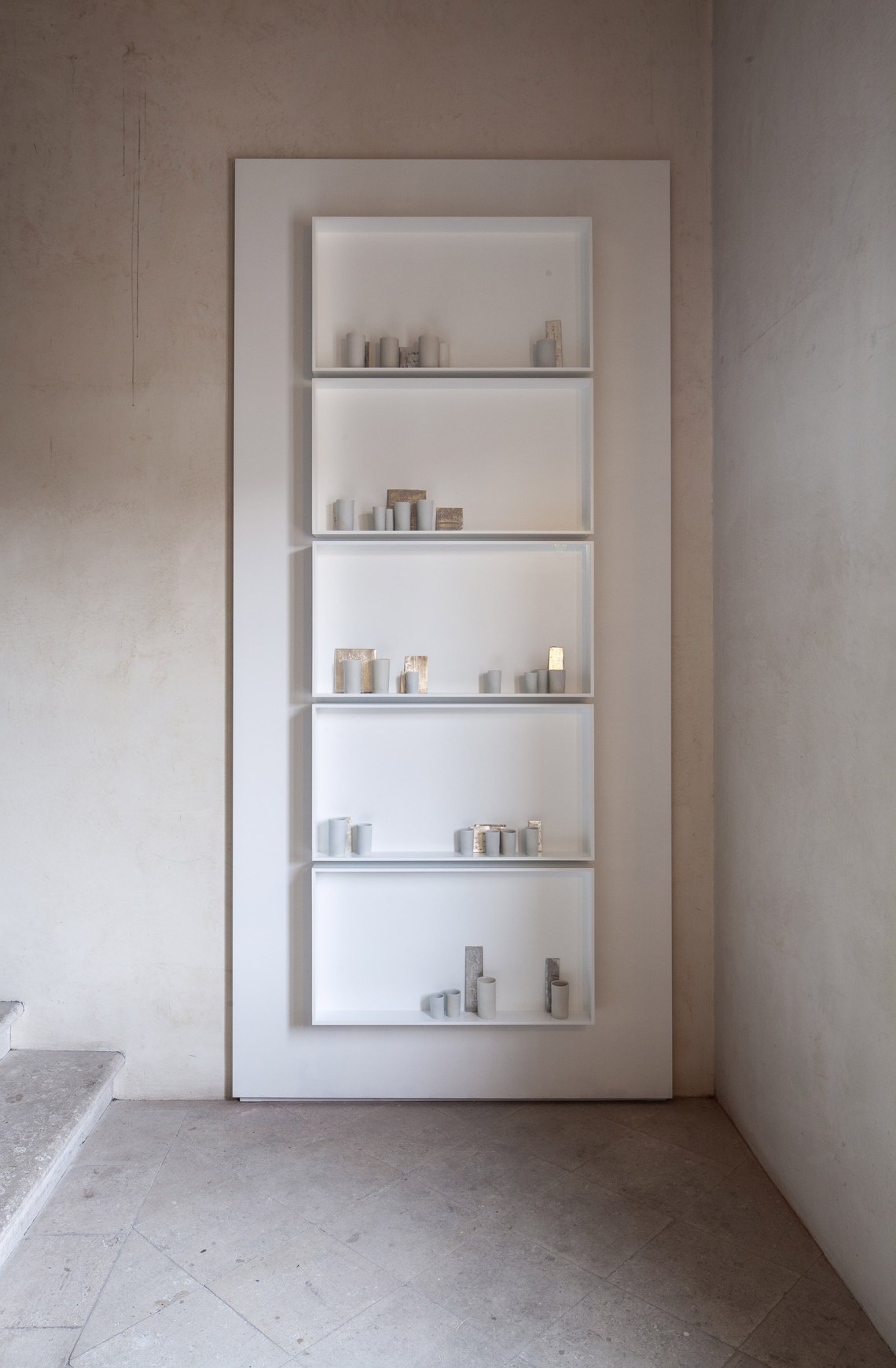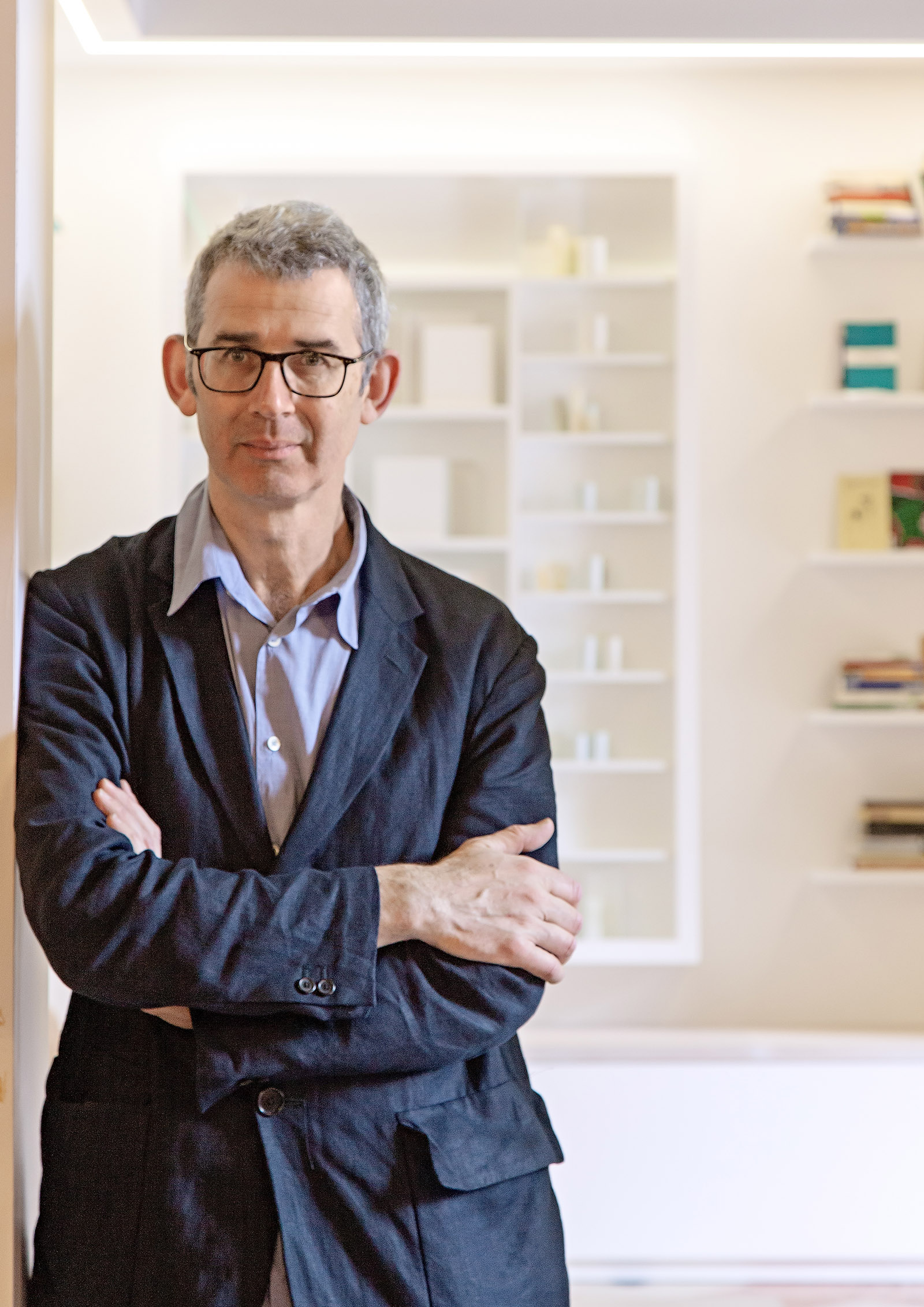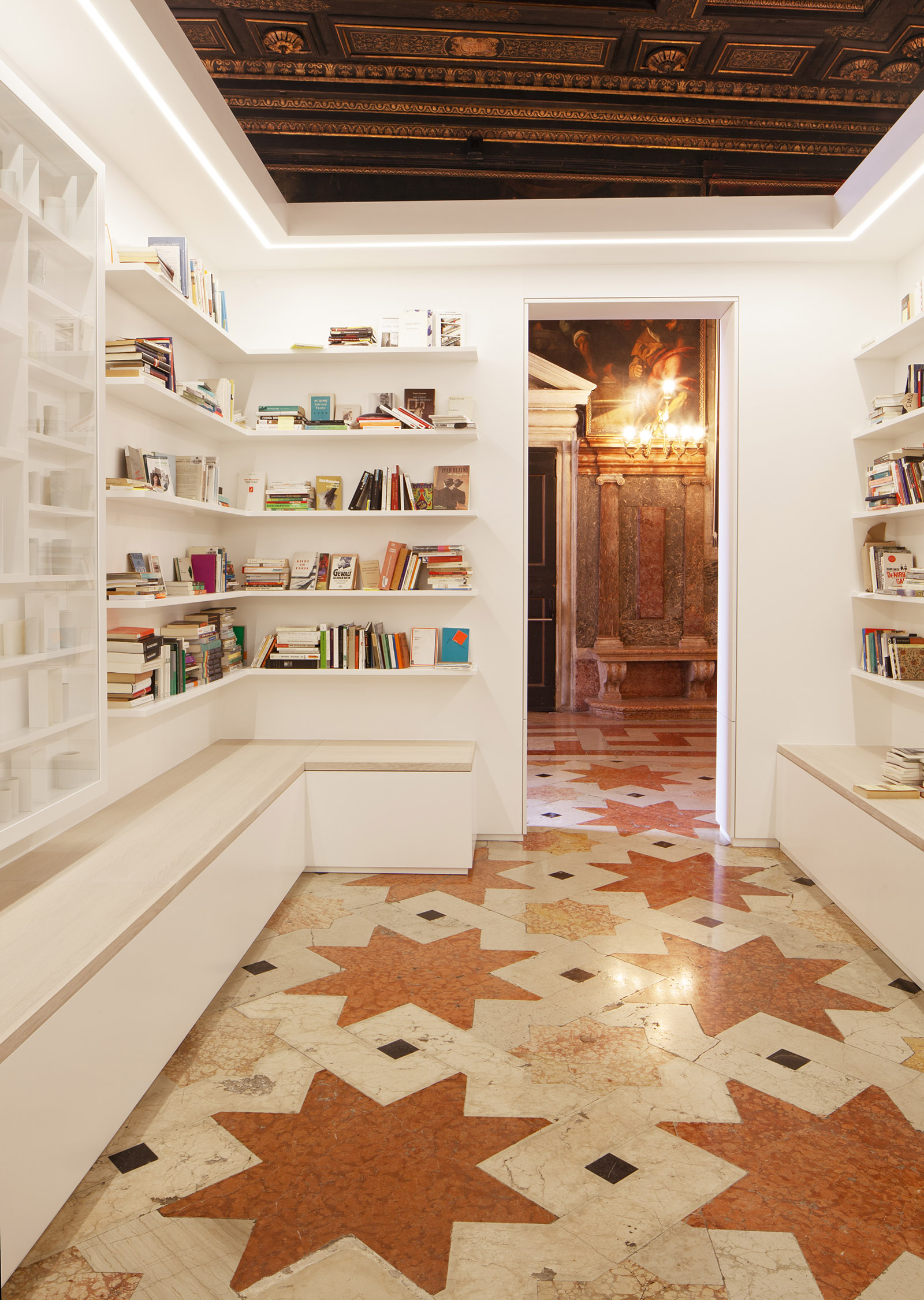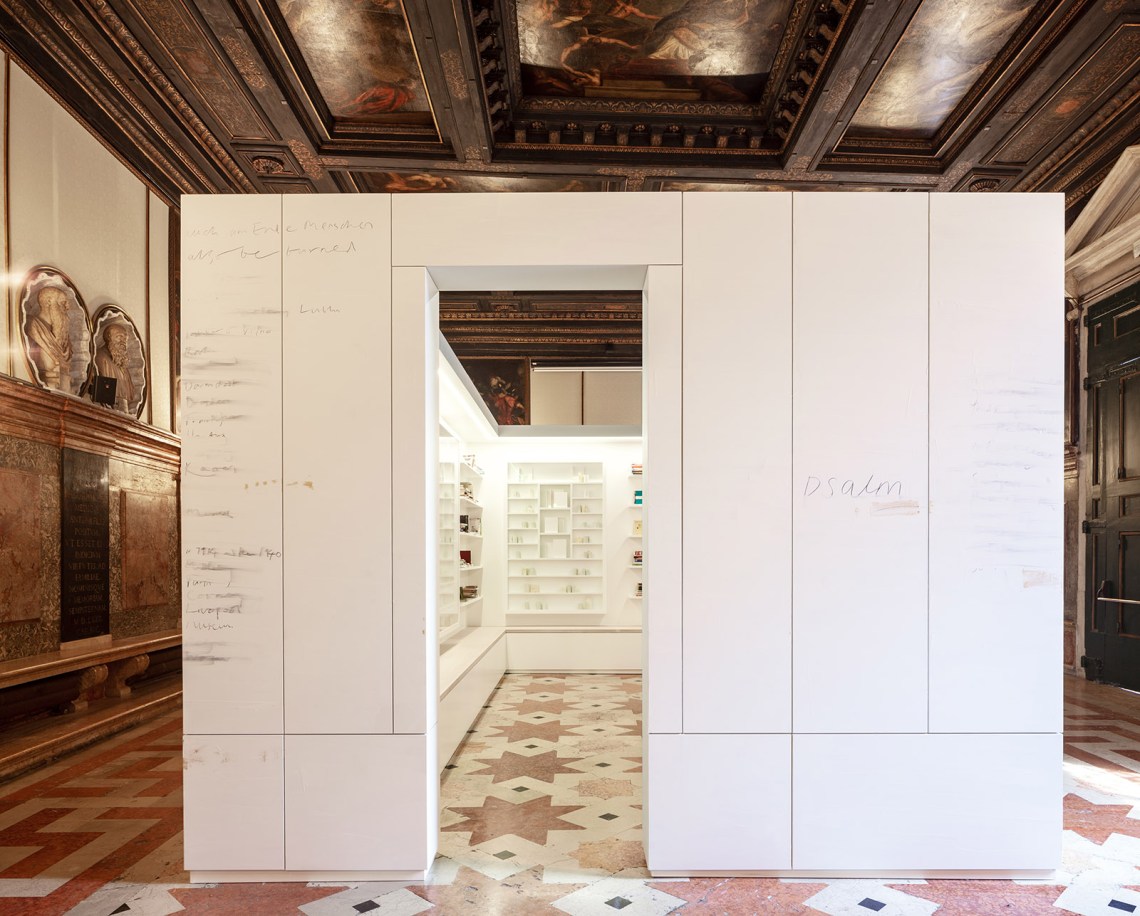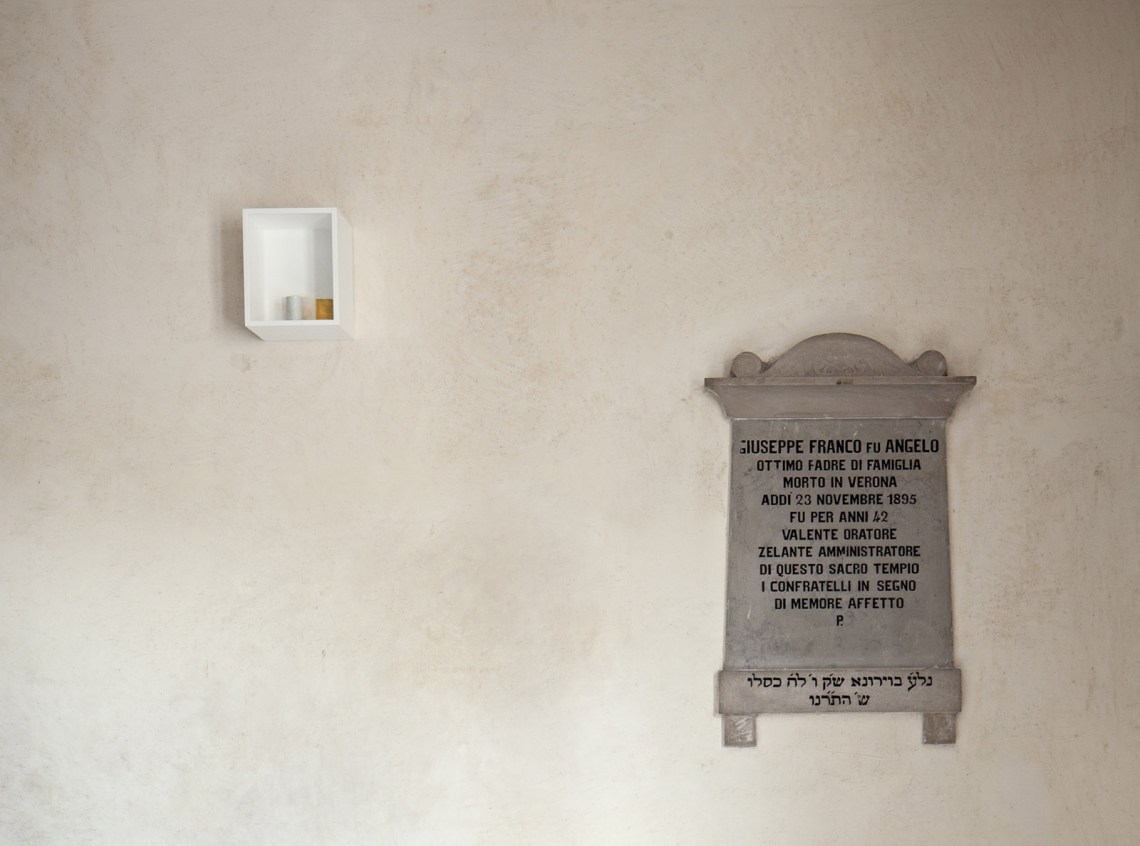Ample and airy, the central square of Venice’s Ghetto Nuovo is quite unlike any other campo in the rest of the city. There are no churches here, no grand columned structures. A few trees provide shade in which children play and old men while away the hours. Tall, thin, unadorned buildings outline the square. Low-ceilinged extra floors were needed to house the Jewish population crammed into tenements here by the Republic of Venice edict of 1516. The order segregated Jews into what had previously been a dumping ground for the slag, or getto, created by the city’s copper foundries. The foundries had by then moved to a grander shipbuilding location, the Arsenale, which now hosts the Venice Biennale.
The Ghetto offered the Jews the city’s protection in return for steep taxes and high rents. It kept them by the lagoon but close to the city center: from there, they could provide essential financial and other services, while simultaneously being kept apart from the rest of the population. Religious differences aside, it seemed that many Christian men found Jewish women particularly desirable, so laws and borders were put in place prohibiting the wrong kind of encounter. Open during the daytime, crossings into and out of the Ghetto were closed at night.
Despite hardship and against the odds, the precinct became a burgeoning, polyglot trading and cultural hub, with five synagogues, the city’s only free schools, music, scholarship, printing, and, at its peak in the seventeenth century, a host of famous physicians called upon by wealthy Venetians. Dispersal, migration, and the fascist race laws and deportations during World War II mean that today, Venice’s Jewish population numbers a mere 450.
All this and more reverberates through writer and artist Edmund de Waal’s two site-specific installations. They go by the joint name of “Psalm,” those biblical poems and prayers of exile that are core to all three Abrahamic faiths and are haunted both by memories of loss and hopes of refuge, sometimes of retribution. The first part of the show is situated at the top of what is now the Ghetto’s Jewish Museum, a building that also houses that jewel of an Ashkenazi synagogue, the Scuola Canton, built in 1531–1532.
At the threshold of the Scuola, eleven precisely balanced vitrines, bearing the name Tehillim, Hebrew for The Book of Psalms, and containing delicate sheets of gilded porcelain and blocks of translucent white marble, engage in what feels like a musical round not only with us, their viewers, and with the changing play of light, but also with those who once prayed in the Scuola and those who still do today. A little further along, another vitrine holds three porcelain pots so fragile in appearance and placement, they conjure humans leaning against each other, while, inches away, a rectangular container brims with porcelain shards. Some of these fragments, here and elsewhere in the installation, are written upon, bearing partly visible phrases from Osip Mandelstam or Rainer Maria Rilke.
The latter’s uncannily apt story “A Scene from the Venetian Ghetto” partly inspired “Psalm,” De Waal has written in the notes to the work, and the story resonates through the space. It tells of an old man who wants to move ever higher and higher in his tenement building, so that finally he steps out on a roof “where a new country began, of whose customs the old man spoke in dark words, as though half caught up in the raptures of a psalm.” The exhibition takes us on that journey ever higher into the building until we are at the Sukkah, where a new world is intimated.
Along the way, De Waal has also made a writing table to honor the Ghetto poet Sara Copia Sullam (1592–1641). Sullam ran a famous artistic salon here filled with thinkers and writers of all faiths. After she sent a letter to Ansaldo Cebà about his play L’Ester, Sullam became the writer’s love object. He never met her in person, but in a series of letters (published in 1623), he sang of his love for her beauty and intelligence, urging her all the while to convert to Christianity. He failed in that; and failed, too, to defend her when she was accused of not believing in the immortality of the soul, an offense that could have led to trial by the Inquisition. In a shadowy palimpsest, De Waal has inscribed the words of “By the Rivers of Babylon,” the beginning of Psalm 137, onto her table’s gold leaf, over which De Waal has brushed a thin coat of porcelain paint—a trademark of his—like a slip. To live in the Ghetto, the piece seems to say, is to remember, to remember again, and to weep—not only over that ancient banishment from Zion, to which the psalm refers, but over all the painful dislocations since.
Advertisement
The crowning piece of this part of the exhibition stands in a light-filled room at the very top of the building overlooking the entirety of the campo: with its ceiling of curving iron wrought to look like branches, this is a traditional Jewish Sukkah, a sheltered space in which the Feast of Tabernacles—a harvest festival commemorating the Jews’ forty arduous years of wandering in the desert—is celebrated beneath a festive canopy of greenery and fruit. De Waal has constructed his own version of this sanctuary: a high mirroring table on which tall, narrow, and rectangular free-standing vitrines of varying heights cluster together. Each shelters a rounded or ridged porcelain vessel. Strips of airy white steel are poised like gleaming walls against the vitrines. Placed irregularly in their midst are shims of gold. In the play of refracted light, the structure suggests both the idealized city of memory and a dazzling new city, a shelter for the future hopes of the dispossessed.
Amid the vast and often noisy installations of the Venice Biennale, Edmund de Waal’s work stands out for its contemplative quietude. His sensibility is singular in a host of ways. Besides being a visual artist, he is also a writer of great accomplishment. His award-winning 2010 nonfiction The Hare with Amber Eyes told the story of his family on his father’s side—Jewish European bankers, collectors, and writers—a patrimony that extended from Odessa to Vienna and Paris, obliterated by the Nazis. One consequence of that erasure was that De Waal himself was raised an Anglican, the son of the dean of Canterbury Cathedral.
In The White Road (2015), he recounted his love affair with porcelain and the long, fascinating history of the material’s travels and fashioning. It was to Venice, in fact, that Marco Polo brought the earliest porcelain vessel in the Western hemisphere—and De Waal chased it down here for that book. Porcelain of the purest white remains the primary material out of which his fragile, luminous vessels, the central components of his installations, are fashioned.
Since time, frozen in stasis, seems a recurrent element of his visual art, it’s tempting to think of each of his vessels as a word or a fragment of a sentence or poem. But to me these vessels, as well as the square or rectangular shapes of marble and gold leaf in his work, also suggest musical notation—setting up a contrapuntal dialogue with the light and the space they inhabit, providing comment or argument, yet invoking a meditative silence, a call to attentiveness.
If the first part of “Psalm” reflects on the ghetto and a wandering people, the second part takes that early history of diaspora into the present, focusing less on the people of the book than on the book itself and the fate of displaced people generally. This second part of “Psalm” is housed in the very heart of Venice, next to La Fenice, at the Ateneo Veneto, an old professional guild or society of writers, artists, scientists, doctors, and thinkers, founded in 1812 by Napoleonic decree. (It was Napoleon who freed the Jews from the Ghetto.) The Ateneo, which also houses a splendid library, has promoted liberal debate ever since. It is here in the Aula Magna, the main ground floor space, that De Waal has created his Library of Exile just beneath a ceiling of frescos by Palma il Giovane (1544–1628), Tintoretto’s successor.
De Waal’s sculpted rectangular library has walls of porcelain painted over sheets of gold leaf. Half-hidden palimpsests, like graceful graffiti, speak of libraries lost and destroyed, from ancient Nineveh and Alexandria to Lvov and Odessa to the recent extinction of the libraries of Timbuktu, Aleppo, and Mosul. The loss of Walter Benjamin’s library, whose work is close to De Waal’s heart, is mentioned here, too, as is his great grandfather, Viktor von Ephrussi’s classical library in Vienna looted in 1938. High up on two corners of the structure, Heinrich Heine’s words are inscribed: “Where they burn books, there they will, in the end, burn people.”
Inside, Library of Exile houses spaces for sitting and reading some of its 2,000 volumes, ranked at the moment by the country of origin of their writers, though they could as easily be arranged by their many places of translation or the ultimate destination of their authors. Books migrate and, in this library, so have their makers. Ovid and Tacitus and Dante, all banished exiles, are here. So, too, are Voltaire and Victor Hugo, Thomas Mann and Joseph Roth, the Russian poets Marina Tsvetaeva and Mandelstam, the Albanian Ismail Kadare, the Polish Czesław Miłosz, the Ukrainian-born Clarisse Lispector, Palestinian Edward Said, British Asian Nikesh Shukla, shelves of Walter Benjamin and much more (for full disclosure, and to my pleasure, even two volumes by myself).
Advertisement
Each volume has a card on which readers can sign their names to make their mark on the library. While I was there, people were doing just that, as well as suggesting to attendants other books to add to the collection. There is space for more and De Waal welcomes gifts and ideas from the public.
Embedded between the shelves is a quartet of De Waal’s vitrines. Each of these echoes in its arrangements of pots and book-ends the singular design of the pages of the famous Babylonian Talmud, printed by Daniel Bomberg in Venice between 1520 and 1523. In this volume, which De Waal has also included in the library, the main text occupies the center of the page while all around it wheel the translation, the commentaries, and exegesis—and rather after this fashion, around Library of Exile a series of discussions by writers and poets on the themes of migration, translation and displacement, together with a host of performances and events all coordinated by the Ca’ Foscari University of Venice will take place during the Biennale months.
In October, De Waal’s Library is itself set to migrate—to new locations in Germany and Britain. Ultimately, it will settle in the war-torn city of Mosul, in Iraq, restoring something to a population recently dispossessed of its own precious library heritage.
“Psalm,” by Edmund de Waal, is at the Jewish Museum and the Ateneo Veneto through September 29; the two-part show will then tour the Japanisches Palais, Dresden, and the British Museum, London.

